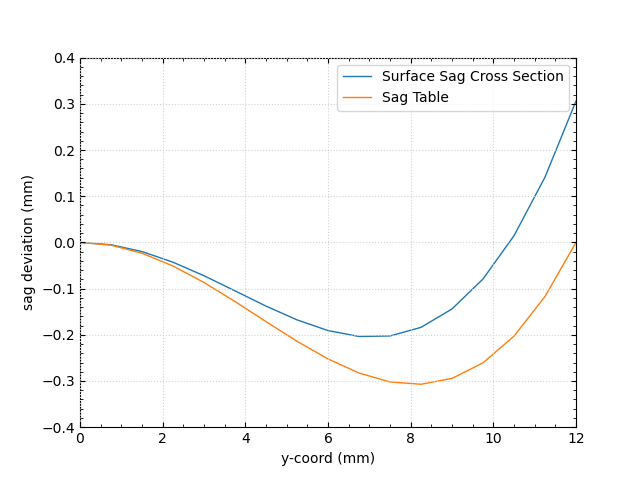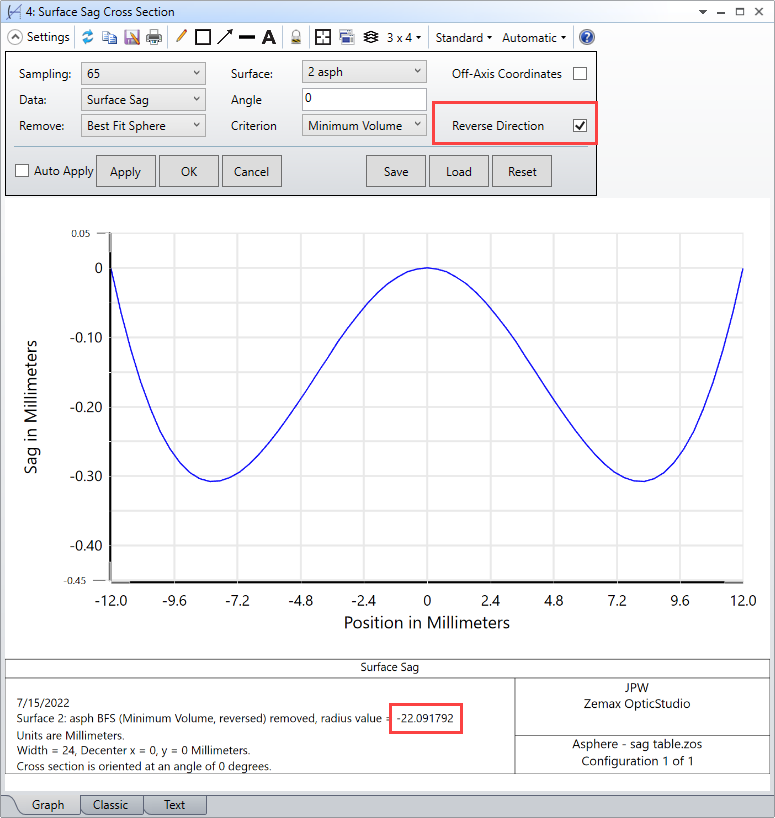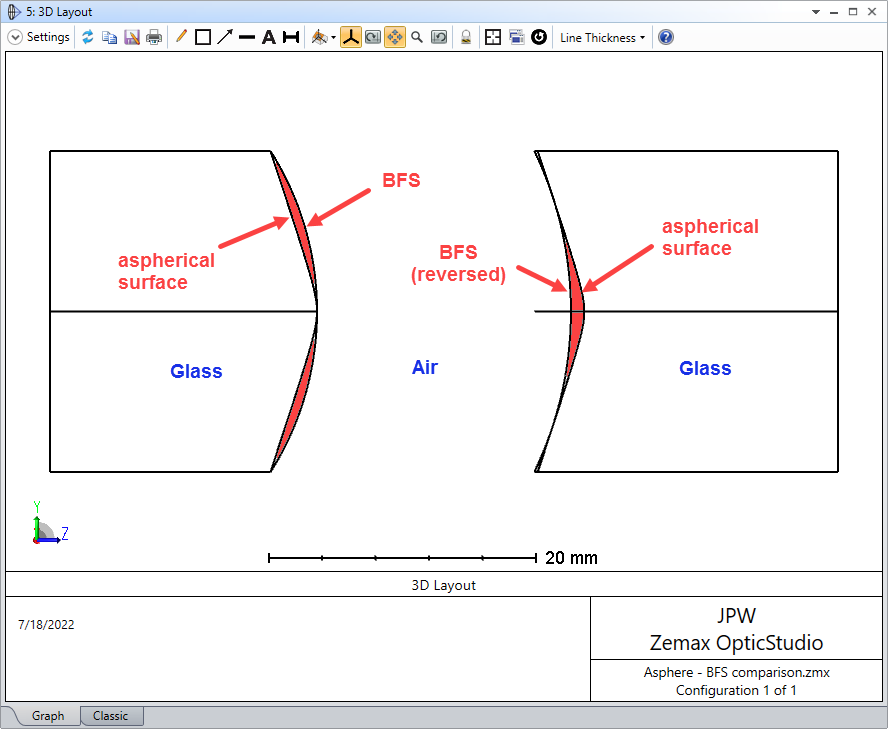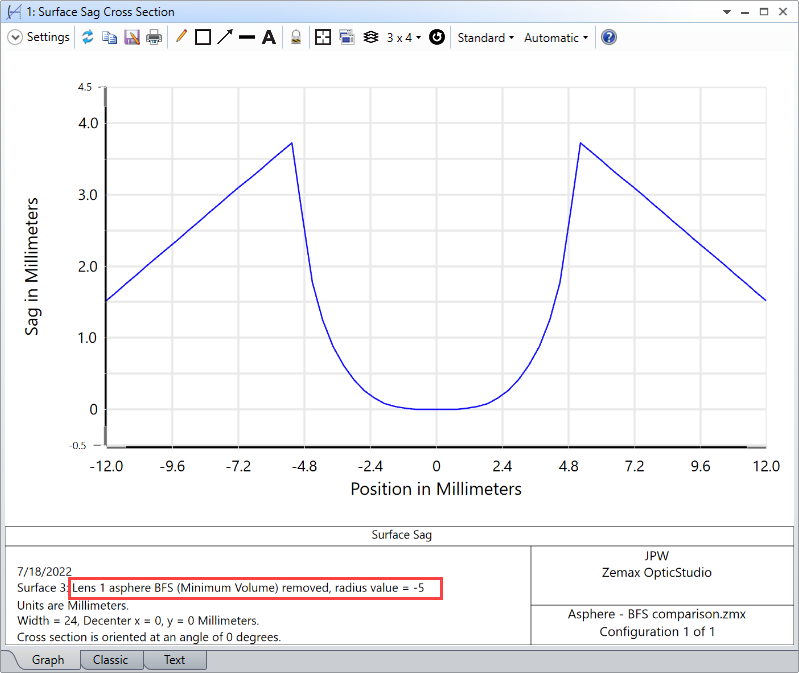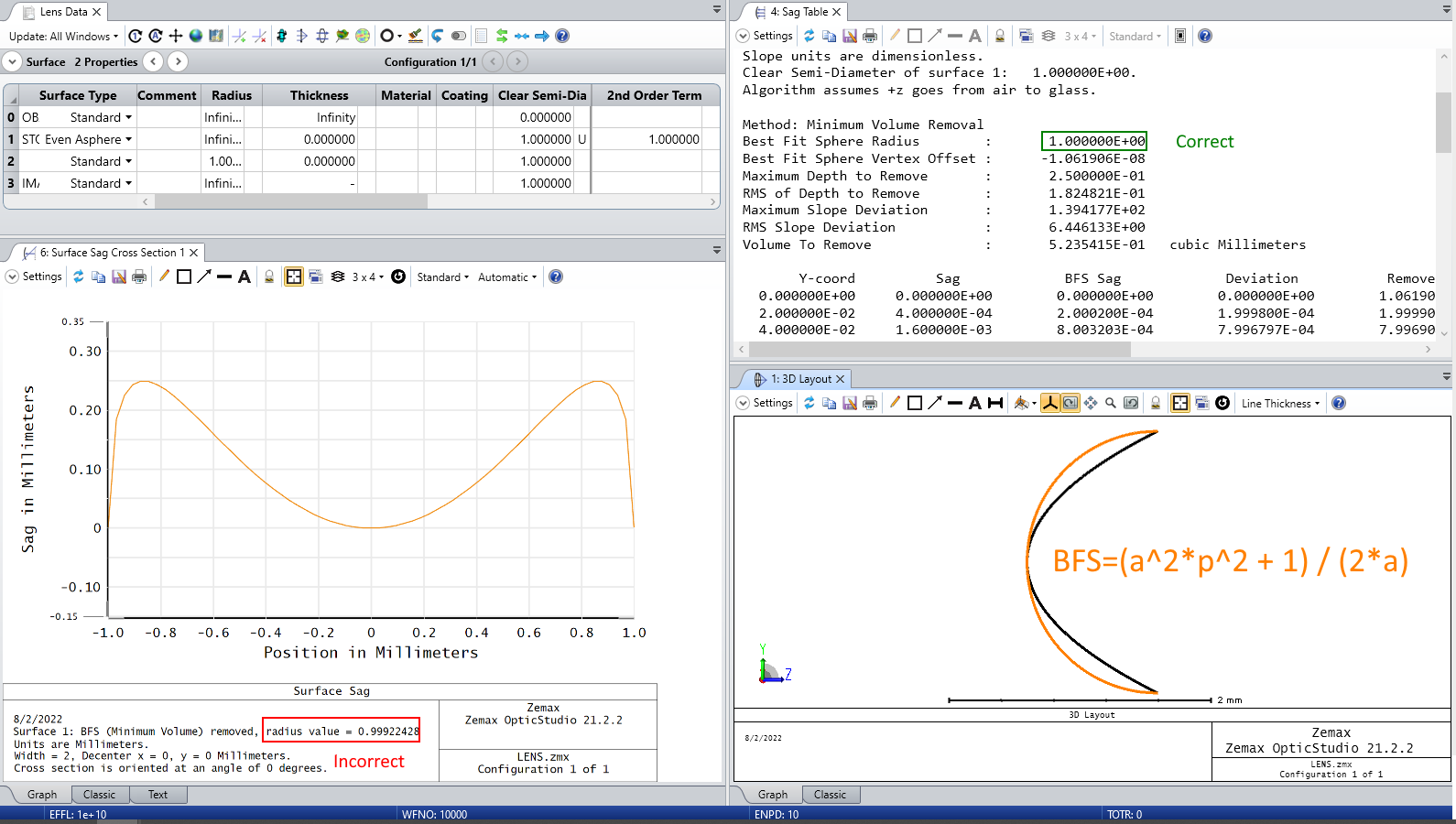I was trying to find a way to plot with OpticStudio the “Remove” column of the “Sag Table” feature. I went straight to the “Surface Sag Cross Section” feature and selected “Remove: Best Fit Sphere”. In both cases the BFS fitting Criterion was kept to “Minimum Volume”.
Unfortunately I’m realizing that the calculate BFS radius is not the same for the two cases and, therefore, the BFS sag offset changes accordingly.
I might be doing something wrong. Please, see the attached sample file.


